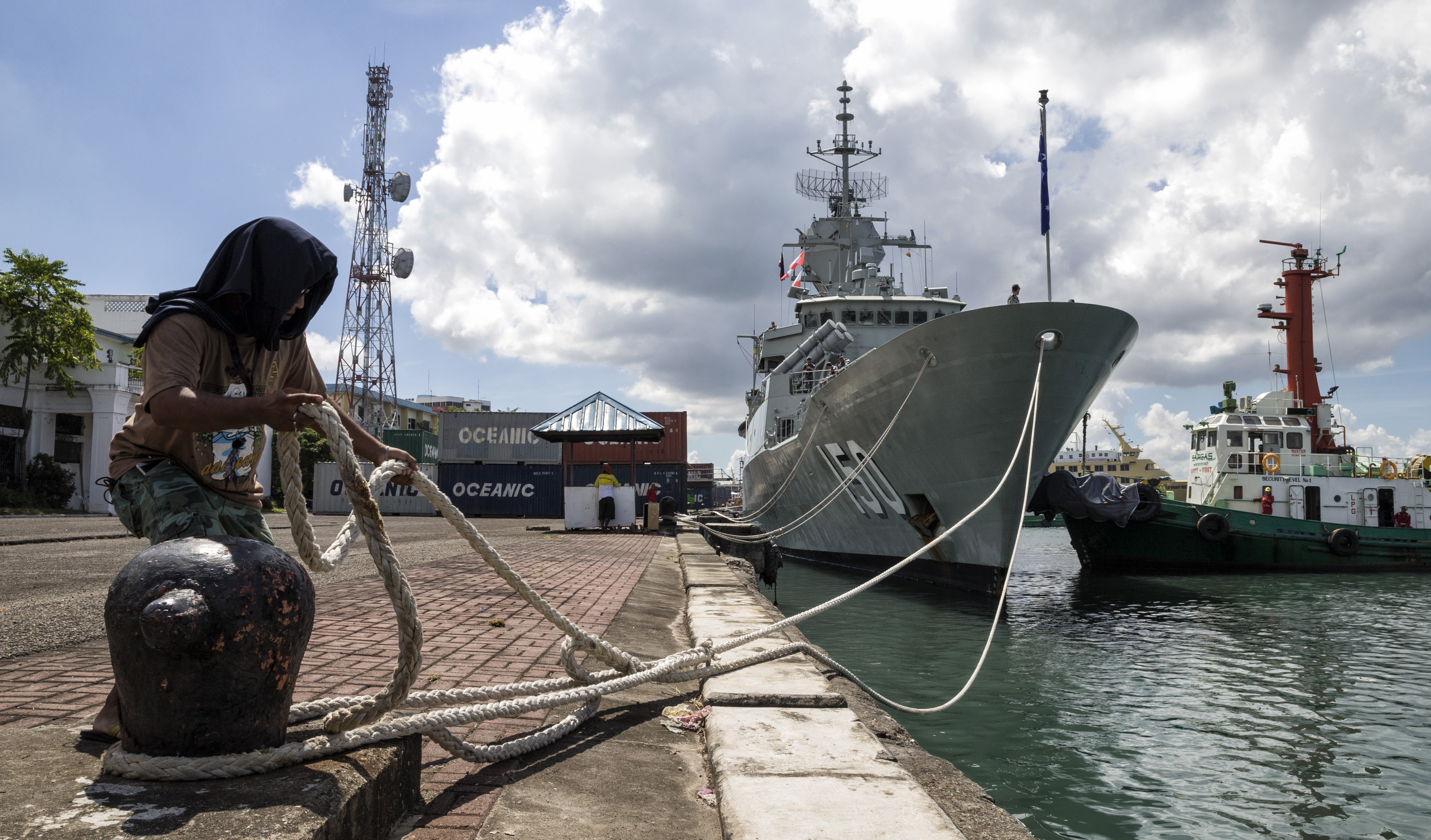HMAS Anzac, lead ship of the Royal Australian Navy’s Anzac Class of frigates, has now become the fleet’s oldest surface combatant. But for the ship’s company of HMAS Anzac, retirement couldn’t be further from the mind, with thoughts instead focused on an exciting new future.
To continue reading the rest of this article, please log in.
Create free account to get unlimited news articles and more!
Following the decommissioning of HMA Ships Success (II), Melbourne (III) and Newcastle in 2019, HMAS Anzac (III) became the RAN’s oldest surface combatant.
At the Henderson Shipyard in Western Australia, the combined efforts of uniformed personnel and contractors have been hard at work transforming Anzac into one of the world’s most advanced frigates as part of the Anzac Mid-life Capability Assurance Program (AMCAP).
Just as the stereotypical mid-life crisis brings new equipment, so does a mid-life upgrade program.
In preparing for many years of service to come, Anzac is receiving new phased array air search radar, an enhanced communications suite, as well as improved cooling and other platform systems upgrades.
Anzac's participation in the AMCAP program comes hot on the heels of HMAS Arunta (II), which was the first FFH (fast frigate helicopter) to receive the upgrade.
Completing all of the work is no small task and, as Anzac approaches the end of an 81-week external maintenance period, life for the ship’s company is only getting busier.
In these demanding times, Anzac has harnessed innovative new ideas and is working smarter as well as harder. A key improvement has been the establishment of a revised duty watch construct.
A ‘ground up’ assessment of requirements, given both the challenges and benefits of Anzac’s situation, resulted in reduced impacts to the work-life balance of personnel, while still maintaining response options for any emergency incidents.
As a result, across all of ship’s company, Anzac personnel will keep fewer duties and spend extra nights at home with their families.
Given the positive impact on retention, the three personnel who did the bulk of the work to implement the new construct received iPads, as a reward recognising them as Navy Growth and Retention champions.
These personnel were Lieutenant Liam McMahon, Petty Officer Bosun Liam Apps and Leading Seaman Combat Systems Operator Bradley Mossop. The productivity benefits of physical activity are well known and Anzac’s program of whole ship physical training and sport makes sure Anzac will be ‘fit to fight’.
Isolated from the facilities of Anzac’s homeport of Fleet Base West, an arrangement was made with the local council. Every Monday, Wednesday and Friday, personnel decked out in Anzac’s sporting colours, green and gold, can be seen taking over the grassy fields of the South Coogee Reserve.
The initiative was first introduced by the former crew of HMAS Stuart (III) and has been carried over as business as usual when the crew swapped into Anzac.
The future for Anzac is bright, with the ship’s company already benefiting from the fruits of their hard work and innovation. There is no doubt they will go on to further successes in 2020 when Anzac returns to the fleet.
The aim of AMCAP is to upgrade and update the capability of the Anzac Class frigates to maintain relevance, and to ensure the class remains effective until the introduction of the Hunter Class frigates.
There are three major elements of the upgrade, that is, a new communications suite, the new air search radar and the platform systems remediation (PSR). The PSR will see the upgrade of systems such as the propulsion control, fridges, waste management and water production.
The AMCAP upgrade is a WAMA project, which is a four-way alliance between the Commonwealth’s Capability Acquisition and Sustainment Group, Saab Australia, BAE Systems and Naval Ship Management Australia.
The WAMA partnership was launched in 2016 to support the Anzacs and includes BAE Systems Australia, Saab Australia, Naval Ship Management and the Commonwealth of Australia. It’s worth more than $2 billion over eight years.
The Henderson-based Australian Marine Complex (AMC) is integral to Australia’s frontline defence and is an important asset in maintaining the RAN fleet. The Common User Facility (CUF) has facilitated major works and repair programs for RAN’s Collins Class submarines, Anzac Class frigates and supply tankers.
The AMC-CUF is home to the world’s most technically advanced floating dock, which can lift vessels of up to 12,000 tonnes out of the water for service. Its four wharves can accommodate vessels of up to 300 metres in length and provide adequate berthing space for major works, including ship conversions, refits and repairs.
The AMC-CUF is also home to ASC West, which provides a purpose-built submarine repair facility and the WA headquarters of ASC, an Australian-owned prime defence contractor and builder of the Collins Class submarine and Hobart Class air warfare destroyer.
ASC’s through-life support contract will see the Collins Class submarines maintained at the CUF over the next 25 years. Warfare systems developer Raytheon Australia and other defence contractors, including BAE Systems, also reside within the AMC’s precincts.

 Login
Login







